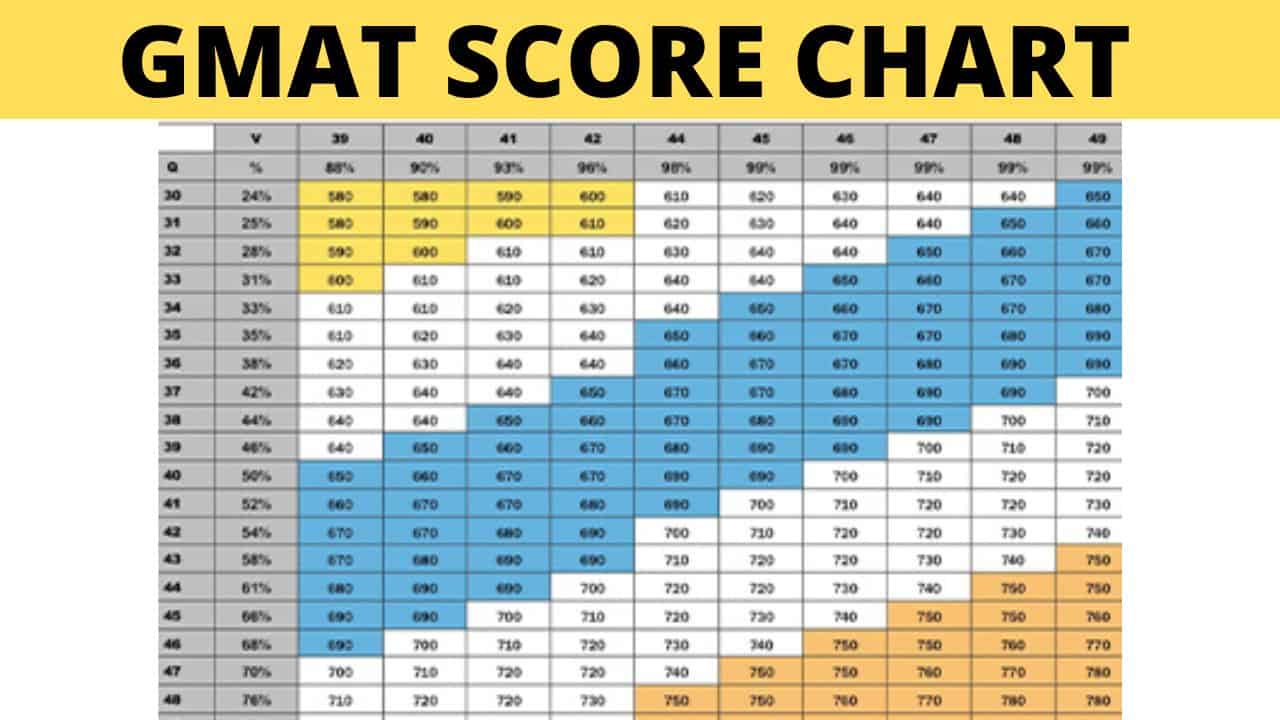Is Your GMAT Score Chart Still Valid?
A GMAT score chart provides a general idea of how well you are doing on the test. Even though the actual GMAT score is only valid for five years, it can be a valuable tool when determining areas for improvement. A score in the 90th percentile means that 89 percent of test-takers will not achieve a score of 670. However, these scores are only a rough guide. They are based on a curve that can vary by 50 to 60 points, so your score might be significantly higher or lower than that.
It translates a prospective graduate school student’s exam results into a GMAT score.
The GMAT is a test taken by prospective graduate students to gauge their potential for success. Universities use the GMAT score as a predictor of academic success. The chart below translates a prospective graduate student’s exam results into a GMAT score. The chart also provides percentile rankings for the GMAT exam, so applicants can compare their scores to other prospective students. The GMAT score chart is updated each summer, and test scores don’t change the percentile ranking.
The GMAT score chart consists of five different ways to interpret the exam results. The first section of the test is computer-adaptive, and the second section varies in difficulty depending on the test taker’s score. This means that each test taker’s GMAT score will affect the difficulty of the second section. The analytical writing section is graded by a human examiner and a computerized program. The two scores are then combined to determine the final GMAT score.
The GMAT is one of the most widely accepted exams for graduate school admission. More than 6,000 business schools accept the GMAT. Top online MBA programs also use it. But you do not have to take the GMAT to get an MBA from a reputable online school. The GMAT score is just one factor that graduate schools look at to determine whether students are academically prepared for the rigorous coursework and curriculum.
Besides taking the GMAT multiple times, many people try to improve their scores. Most prospective students read GMAT prep books and take courses to increase their scores. Depending on the GMAT score you are targeting, you can adjust your preparation strategy accordingly. The expert guide will tell you which study techniques to use to increase your score. The expert guide will also outline how long you should study for the GMAT.
In addition to the GMAT, many business schools also use the GRE. Some graduate programs are not specifically business-oriented, and taking the GMAT ensures that admissions teams won’t second-guess your decision. For example, 78 percent of the incoming Harvard MBA class took the GMAT, whereas only 22 percent of Stanford MBA students did.
It’s valid for five years after you take the exam.
When taking the GMAT, you may be wondering if your scores are still valid. GMAT scores are only valid for five years after you take the test. However, they may still be reported to top colleges and universities for ten years. In these circumstances, the GMAT score chart you have is still valid. Here are some things to keep in mind. The validity of your score chart is important.
Your GMAT score chart is based on unofficial scores. However, the score chart you receive is still valid five years after taking the exam. You can use it as a guide to see if you are eligible for your target business programs. However, you cannot use the chart to apply to a particular program. If you don’t get in, you can always retake the test.
If you’re applying to business school, make sure your GMAT score chart is accurate. The GMAT score report includes all tests you’ve taken in the past five years. However, scores from canceled tests before 2015 will not appear on score reports. You can see your score history online and reinstate scores if you want to. You can also check your score if you’re unsure of your score.
Your GMAT score chart is available electronically or on paper. It includes your demographics and self-reported GPA and the scores on each GMAT section. Your GMAT score chart will also contain information on all previous GMAT examinations, such as your undergrad degrees. Finally, your score chart contains a digital photograph of you taken at the test center. These two elements are vital for the accuracy of your GMAT score report.
Once you have received your GMAT score chart, you can check your percentile and target scores. The GMAT score chart will show the percentiles of various quant and verbal scores. This will give you an idea of how competitive each score is compared to other scores. Ensure you map your high verbal score to the right quant score to ensure you’re on track to hit the target grade.
It helps you determine areas of improvement.
A good study plan will identify areas of improvement based on your starting score. Many underperformers spend too much time studying the Verbal section, whereas others spend too little. In addition, a study plan will also help you understand your weaknesses, such as time management or anxiety. Moreover, setting realistic study goals is essential for improving your GMAT score. Pick a realistic target score based on your current starting score, timeline, motivation, and attention span.
Your total score will show you where you stand among the test takers. Your percentile rank will give you an idea of how well you are doing compared to the others who took the same test. In other words, if you have a total score of 660, then you are in the top 25 percent of test-takers. Likewise, if you score between 660 and seven hundred, you are in the top five percent of the class.
It’s a trusted exam.
The GMAT score chart is based on real data from the actual test taken. This data comes from official Enhanced Score Reports. You can use the GMAT score chart to know what you need to achieve your target total score. This is particularly useful if you’re applying to business school. Whether you’re taking the exam to boost your salary or increase your chances of admission, a GMAT score chart will give you a good idea of your chances of getting in.
The GMAT score is calculated on a scale of 200 to 800. The total score is a combination of the scores from the Verbal and Quantitative sections. Each section has a different weight and is based on the question difficulty. The GMAT score chart provides percentile rankings for the verbal and quantitative sections. Using a GMAT score chart will allow you to understand your performance in each section.
The GMAT score chart reveals a percentage of the test takers who performed worse than you. This data is based on test-takers scores over the last three years. As a general rule, people do better in the quant section than in the verbal section. The average score for the GMAT is around 565 points, and two-thirds score between 400 and 600 points.

